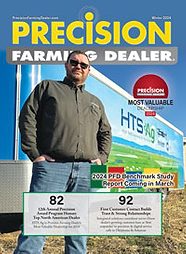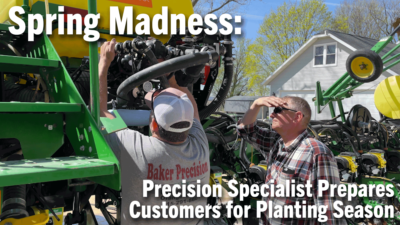 Born and raised in the Midwest, it’s easy to get comfortable with the rhythms and pace of life. And visiting precision farming dealers throughout the region, there is a shared understanding and appreciation for the ebbs and flows of the seasonal workload.
Born and raised in the Midwest, it’s easy to get comfortable with the rhythms and pace of life. And visiting precision farming dealers throughout the region, there is a shared understanding and appreciation for the ebbs and flows of the seasonal workload.
But last week, I (along with 5 of my editorial colleagues from Farm Equipment magazine) had the opportunity to spend the better part of week at growing California farm equipment dealership. The expansive citrus groves, nut orchards and grape fields along the highway were a stark contrast to the corn and soybean acres that checker the Midwestern landscape.
Even more of a contrast was the level of acceptance and application of precision farming technology in the area. While interest in improving efficiency through technology is ongoing, adoption hasn’t necessarily kept pace.
Demand for commonly-used tools like RTK-level guidance and even auto-steer are less prevalent in an area not dominated by row crops.
“In our market, which is predominantly orchards, there’s not really a demand for precision guidance,” says Joel Turrubiates, the dealership’s integrated solutions manager. “So as a company, we’ve got to be more creative and experiment with establishing our niche.”
One natural opportunity is water management. For the last 4 years, southern California has thirsted for the precipitation areas of the Midwest can take for granted. Moisture sensing technology would seem a perfect fit for the region and the dealership is seeing more movement in this area. (Turrubiates recently quoted a large cooperate operation the price for 60 of John Deere’s Field Connect moisture monitoring systems.)
But finding growers willing to test and prove precision practices can be a challenge, especially when they are growing high-dollar crops. (One acre of pistachios can produce a $40,000 crop). Turrubiates wants to show farmers that technology can help protect their investment.
He worked with customers this past summer on a variable-rate compost spreading system for orchards and would like to develop comprehensive prescription applications as well.
“I realize we’re in a completely different environment out here,” Turrubiates says. “But with the amount of money and management that goes into the crops, there’s a lot of untapped opportunity for farmers to use and us to sell and service.”







Post a comment
Report Abusive Comment